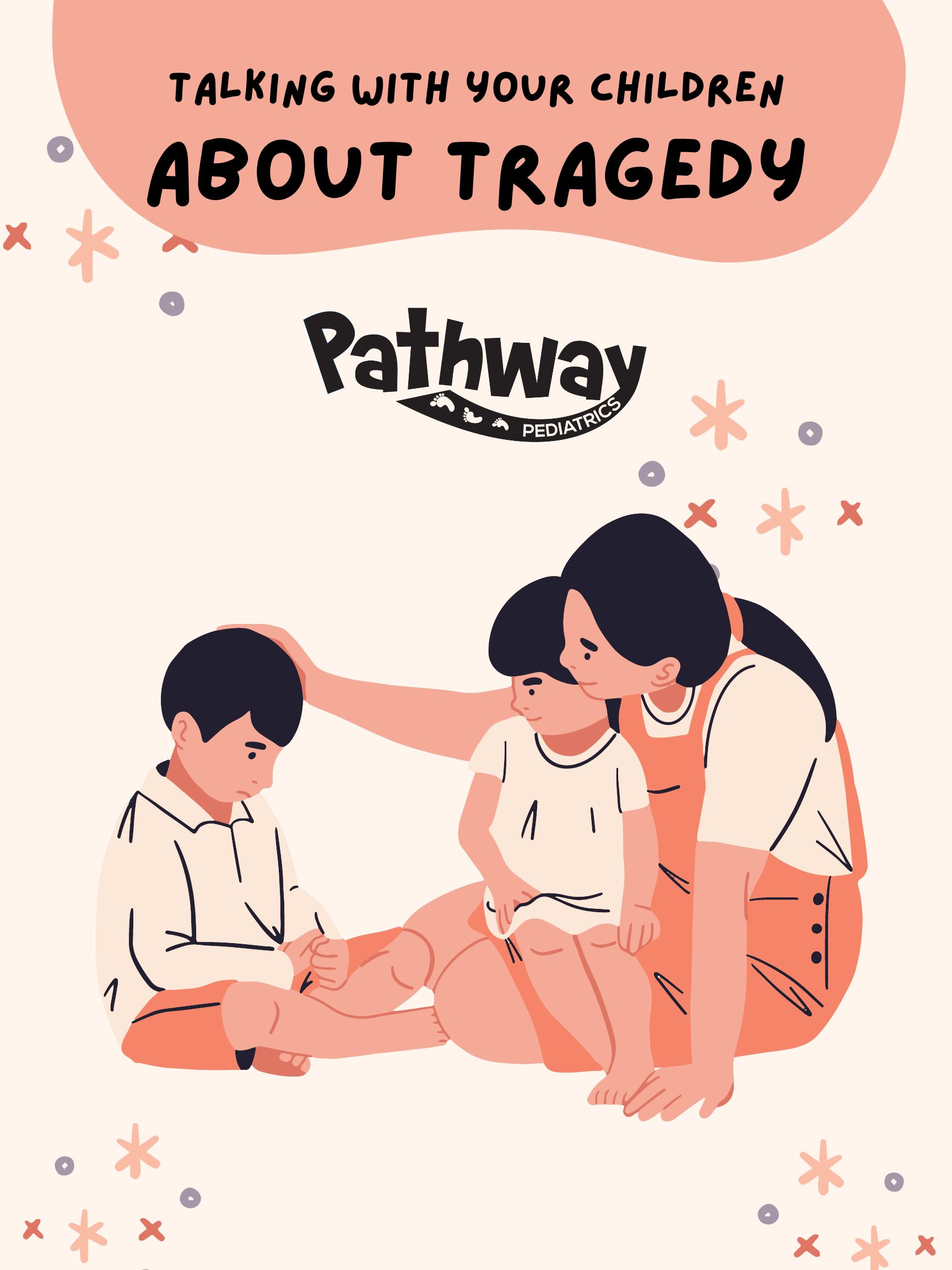Talking With Children About Tragedies & Other News Events
June 22, 2022

After any disaster or crisis, families struggle with what they should say to children and what’s best not to share with them.
The American Academy of Pediatrics (AAP) encourages parents, teachers, child care providers, and others who work closely with children to filter information about the event and present it in a way that their child can understand, adjust to and cope with.
Where to start
No matter what age or developmental stage your child is, you can start by asking what they’ve already heard. Most children will have heard something, no matter how old they are. After you ask them what they’ve heard, ask what questions they have.
Older children, teens, and young adults might ask more questions. They may ask for and benefit more from additional information. But no matter what age your child is, it’s best to keep the dialogue straightforward and direct.https://www.youtube-nocookie.com/embed/KANprqSTX2k
Avoiding graphic details & exposure to media
In general, it is best to share basic information with children, not graphic details, or unnecessary details about tragic circumstances. Children and adults alike want to be able to understand enough so they know what’s going on. Graphic information and images should be avoided.
Keep young children away from repetitive graphic images and sounds that may appear on television, radio, social media, computers, etc.
With older children, if you do want them to watch the news, record it ahead of time. That allows you to preview it and evaluate its contents before you sit down with them to watch it. Then, as you watch it with them, you can stop, pause and have a discussion when you need to.
Children will generally follow good advice, but you have to give them some latitude to make decisions about what they’re ready for. You can block them from seeing a newspaper that comes to the door, for example, but not the one on the newsstand. Today, most older children will have access to the news and graphic images through social media and other apps right from their cell phone. You need to be aware of what’s out there and take steps in advance to talk to children about what they might hear or see.
Talking to very young children
The reality is that even children as young as 4 years old will hear about major crisis events. It’s best that they hear about it from a parent or caregiver, as opposed to another child or in the media.
Even the youngest child needs accurate information, but you don’t want to be too vague. Simply saying, “Something happened in a faraway town and some people got hurt,” doesn’t tell the child enough about what happened. The child may not understand why this is so different from people getting hurt every day and why so much is being said about it. The underlying message for a parent to convey is, “It’s okay if these things bother you. We are here to support each other.”
Talking to gradeschool children & teens
After asking your child what they have heard and if they have questions about what occurred during a school shooting, community bombing, natural disaster, or even a disaster in an international country, a parent can say something such as:
“Yes. In [city], [state]”(and here you might need to give some context, depending on whether it’s nearby or far away, for example, ‘That’s a city/state that’s pretty far from/close to here’), there was disaster and many people were hurt. The police and the government are doing their jobs so they can try to make sure that it doesn’t happen again.”
You can follow-up as needed based on your child’s reactions and questions.
Talking with children with developmental delays or disabilities
Parents who have a child with a developmental delay or disability should gear their responses to their child’s developmental level or abilities, rather than their physical, age. If you have a teenage child whose level of intellectual functioning is more similar to a 7-year-old, for instance, gear your response toward their developmental level. Start by giving less information. Provide details or information in the most appropriate and clear way you can.
Talking with children with an Autism Spectrum Disorder (ASD)
What’s helpful to a child with an ASD may be different. For instance, the child may find less comfort in cuddling than some other children. Parents should try something else that does calm and comfort their child on other occasions. Ask yourself, “Given who my child is, his personality, temperament and developmental abilities, what might work for him?”
Signs a child might not be coping well
If your child doesn’t have a chance to practice healthy coping, you may see signs that they’re having difficulty adjusting. Some of things to look for are:
- Sleep problems: Watch for trouble falling asleep or staying asleep, difficulty waking, nightmares or other sleep disturbances.
- Physical complaints: Children may complain of feeling tired, having a headache or generally feeling unwell. You may notice your child eating too much or less than usual.
- Changes in behavior: Look for signs of regressive behavior, including social regression, acting more immature or becoming less patient and more demanding. A child who once separated easily from their parents may become clingy. Teens may begin or change current patterns of tobacco, alcohol or substance use.
- Emotional problems: Children may experience undue sadness, depression, anxiety or fears.
Sometimes it can be hard to tell if a child is reacting in a typical way to an unusual event or whether they are having real problems coping, and might need extra support. If you are concerned, talk to your child’s pediatrician or a mental health professional or counselor.
Don’t wait for the signs. Start the discussion early, and keep the dialogue going.
Next Post >>